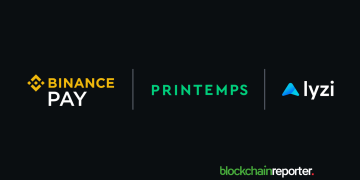If you have invested in crypto, all that effort could be for nothing if you do not secure your crypto. Below are some of the basic concepts you need to understand to manage your cryptocurrency safety.
Understand Custody
Custody is a concept that is central to crypto ownership. It refers to how you manage the responsibility for private keys or seed phrases. The one who controls the private keys or seed phrase to your crypto controls your crypto. When it comes to custody, you can either assume full responsibility or grant custody to someone else to look after the coins.
When you opt to look after tokens yourself, it means you are using a non-custodial option while if you give the crypto to someone else, it means you are using a custodial service.
Spread Assets Across Multiple Digital Wallets
If you hold a huge amount of tokens that you have to hold in an online wallet, you need to ensure that it is stored in multiple wallets. For a business, in case of fraud, spreading assets across multiple wallets, ensure the severity of the loss is minimal.
If you are using self-custody online wallets, it is advisable to use multiple wallets to store huge amounts of coins. While it may inconvenience you by reducing how fast you can move assets, the added time lag is worth it.
Since different companies make different digital wallets, you are also spreading the risk. If there is a bug in one of the digital wallets, it means you will not suffer the full loss of your assets if hackers decide to exploit the bug.
Use Both Hardware & Software Wallets
The safest method to store crypto is in a hardware wallet, where there is no online access to the wallet. However, that is not always a practical solution. One reason for this is that you might need some amount in an online wallet so that you can take advantage of changes in the crypto market.
As such, it might mean you need up to 5% of your total crypto holdings in a hot wallet depending on the size of your holdings. For all the other assets that are not in use, it is best to store them in a hardware wallet. Doing so ensures that in case hackers manage to compromise the hot wallet, you will salvage a large chunk of your assets.
Watch Out For Scams
Besides hackers stealing your assets by accessing your devices, they can also trick you into handing over your crypto assets. This usually takes the form of a rug-and-pull scam. In this classic scam, hackers will convince you to invest in a new project whose value is continuously climbing. As soon as they get enough people to invest their crypto in a project, they will exit the project. As a result, crypto owners are left holding worthless coins, which they exchanged for their valuable coins.
Use Two-Factor Authentication (2FA)
Use wallets and sites that demand at least two-factor verification to keep your digital cash safe. In many circumstances, a second password delivered to your mobile, for example, is the second way of authentication. The initial authorisation would typically include typing a password to login.
Having a physical authentication, such as a finger print or facial/vocal recognition, would be great for multi-factor authentication to help keep your digital cash safe, even though they might not be as widespread. It would be challenging for someone to defeat face recognition software in order to obtain your digital money. Multi-factor authentication is not just recommended for logins, but it may also be helpful for any transactions using your digital currency.
Summary
To avoid falling victims to any scams or hackers, one needs to educate themselves on how the crypto world works. In most cases, scammers rely on the novelty of the sector, and the lack of knowledge by participants to pull off scams. To beat them, the best solution is to learn as much as possible about how crypto works.






















